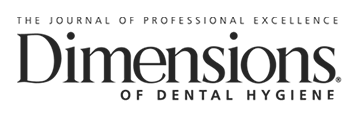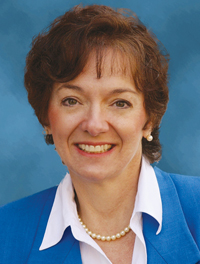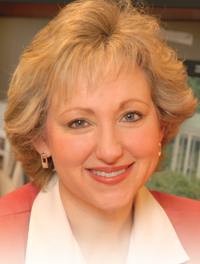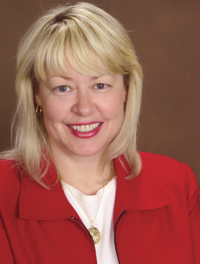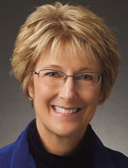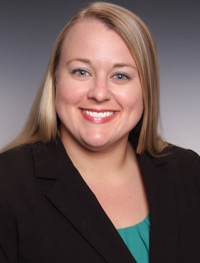
Rachel C. Kearney, RDH, MS, is an associate professor and chair of the Division of Dental Hygiene at The Ohio State University (OSU) College of Dentistry in Columbus. She teaches ethics, professionalism, education, and research courses to undergraduate and graduate dental hygiene students. A lifelong learner, Kearney is currently a doctoral student in OSU’s College of Education and Human Ecology where she is studying learning technologies. She also practices as a dental hygienist at OSU’s Dental Faculty Practice.
Highly regarded in academia, Kearney was the 2009 Recipient of the American Dental Hygienists’ Association Future Leader Award, as well as the recipient of the Colgate Palmolive Allied Dental Educator Fellowship to the American Dental Education Association (ADEA) Leadership Institute in 2014. She also serves as secretary of the ADEA Council of Allied Program Directors.
Kearney presents nationally on social media, educational methodology, professionalism, and ethics, and is published nationally and internationally. Her research focus is on social media and learning technologies. A prolific author, Kearney is also a reviewer for the Journal of Dental Education, Journal of Dental Hygiene, and the International Journal of Dental Hygiene.
While working on my master’s degree, I had thought about continuing to earn my doctoral degree, but I decided that it might not be necessary for my career goals, so I did not pursue it. I was fortunate enough to then get a position as a tenure-track faculty at OSU after I completed my master’s degree. As I began to develop my own research agenda, it became clear that a doctoral degree would have better prepared me to conduct research in dental hygiene. I am also fortunate to have mentors to discuss this with and a mentor who pushed me to start a doctoral program. Earning a PhD will allow me to better contribute to the dental hygiene literature and will also help me to mentor others in doing the same.
What would you say is the most significant issue facing dental hygiene education today?
I feel that one of the most important topics in academia is how educators prepare students for what the profession will look like in the near future—during the students’ careers. While we cannot predict exactly how the profession will look over the next 30 years, we can, as educators, encourage students to develop skills that will help them with a profession that is changing. But this can be challenging to accomplish in addition to covering the required clinical and didactic dental hygiene curriculum.
What do you find most fulfilling about working in academia?
I love to witness the successes of our students, whether that is graduating from our program, earning awards and scholarships, delivering successful presentations, participating in impactful community events, or publishing papers. Helping students to accomplish their goals is such a privilege, and one of my favorite parts of my work.
What do you wish practicing clinicians knew about today’s dental hygiene students?
Students today are coming into dental hygiene programs well prepared and with a desire to serve the public. Dental hygiene students truly embrace serving the needs of their communities while they are in school, and they have a strong desire to continue this in their professional careers. Students today are creative, efficient, and diverse. As educators, we try to capitalize on the characteristics and talents that our students already have when they enter the program.
Where do you see the profession of dental hygiene in the next 50 years?
I think dental hygienists will have clearly defined their own profession and their roles more globally. I envision that the body of evidence specific to dental hygiene will continue to increase.
